Importance of Flashlights
Flashlights are essential tools that we often take for granted. They provide a reliable source of light in various situations, from power outages to outdoor adventures. Flashlights are indispensable in emergencies, helping us navigate in the dark, signal for help, and perform tasks that require illumination. Their compact size and portability make them convenient for everyday use, whether at home, in the car, or on the go.
Evolution of Flashlights
Over the years, flashlights have evolved significantly. Early models were bulky and had limited battery life. Today, modern flashlights are lightweight, more powerful, and energy-efficient. Advancements in technology, particularly the development of LED (Light Emitting Diode) bulbs, have revolutionized flashlight performance. LED flashlights offer brighter light, longer battery life, and greater durability compared to traditional incandescent flashlights.
Post Content Overview
In this post, we will explore the fascinating world of flashlights in detail. We will start with a brief history of flashlights, tracing their development from early models to the advanced designs we use today. Then, we will delve into the different types of flashlights available on the market, such as standard flashlights, LED flashlights, tactical flashlights, headlamps, and rechargeable flashlights. Each type has unique features and is suited for specific purposes.
Next, we will discuss key features to look for when choosing a flashlight, including brightness levels, beam distance, durability, and battery life. Innovations in flashlight technology will also be highlighted, showcasing the latest advancements in smart features, battery technology, and materials.
Additionally, we will cover the various applications of flashlights, from everyday household use to outdoor activities and professional scenarios. Practical tips for maintaining and caring for your flashlight will be provided to ensure its longevity and optimal performance.
Finally, we will review some popular flashlight brands and models, and explore customization options for those seeking personalized designs.
By the end of this post, you will have a comprehensive understanding of flashlights and how to choose the best one for your needs.
History of Flashlights
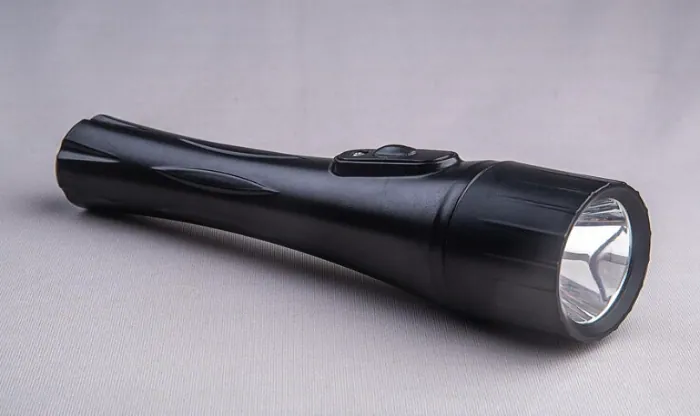
Early Developments and Inventors
The history of flashlights begins in the late 19th century. The first portable electric light was invented by David Misell in 1899. Misell, a British inventor living in the United States, patented his design, which used three D batteries and a small incandescent bulb. This early flashlight was simple, consisting of a paper tube with a brass reflector. Though not very powerful or long-lasting, it marked the beginning of portable electric lighting.
Evolution of Flashlight Technology
The technology behind flashlights quickly evolved. Early models had several limitations, including short battery life and dim light output. However, improvements in battery technology and bulb efficiency led to significant advancements. In the 1920s, flashlights became more reliable and began to be widely used.
A major breakthrough came in the 1960s with the introduction of alkaline batteries. These batteries provided longer life and more power compared to the zinc-carbon batteries used previously. Flashlights became more efficient and practical for everyday use.
The next significant evolution occurred with the development of LED (Light Emitting Diode) technology in the late 20th century. LEDs revolutionized the flashlight industry. Unlike incandescent bulbs, LEDs are more energy-efficient, durable, and provide brighter light. They also have a much longer lifespan, reducing the need for frequent replacements. The introduction of LED flashlights in the 1990s and early 2000s transformed portable lighting, making it more reliable and versatile.
Modern Innovations
Today, flashlights come in various shapes and sizes, equipped with advanced features. Rechargeable batteries, multiple light modes, and waterproof designs are now common. Some modern flashlights even include smart technology, such as USB charging ports and programmable settings.
Flashlights have come a long way since their inception, evolving from simple, dim devices to powerful, multifunctional tools. This progression has made them indispensable in a wide range of applications, from household use to outdoor adventures and professional settings. As technology continues to advance, we can expect even more innovations in the world of flashlights.
Types of Flashlights
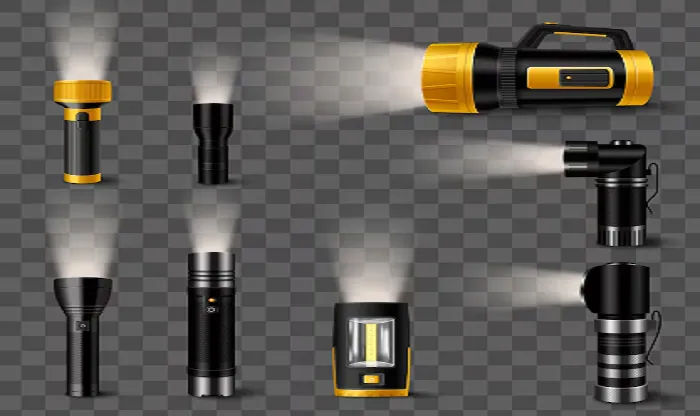
1. Standard Flashlights Common Uses and Features Standard flashlights are the basic, traditional type of flashlight that most people are familiar with. They typically have a cylindrical body and are powered by disposable batteries like AA or D cells. These flashlights are simple and easy to use, making them great for general purposes such as finding items in the dark, power outages, or basic outdoor activities like camping.
Suitable Environments for Use Standard flashlights are ideal for indoor use or light outdoor activities. They work well in homes, garages, or during family camping trips. Their simplicity and reliability make them a handy tool for everyday tasks.
2. LED Flashlights Advantages of LED Technology LED flashlights use light-emitting diodes (LEDs) instead of traditional bulbs. LEDs are much more efficient, providing brighter light while using less power. They also last longer and are more durable than incandescent bulbs, making them a popular choice for many users.
Popular Models and Their Benefits Popular LED flashlight brands include Maglite, Fenix, and Streamlight. These flashlights often have multiple light modes, such as high, medium, low, and strobe, providing flexibility for different situations. Their long battery life and robust build make them suitable for both casual and professional use.
3. Tactical Flashlights Features and Functions for Law Enforcement and Military Use Tactical flashlights are designed for high-performance use, especially in law enforcement, military, and security settings. They are extremely durable, often made from aircraft-grade aluminum. Features typically include high lumens output, strobe mode, and the ability to be mounted on weapons.
Key Characteristics and Popular Models These flashlights are water and impact resistant, with a compact design for easy carrying. Popular models include SureFire, Olight, and Streamlight, known for their reliability and performance in critical situations.
4. Headlamps Benefits for Hands-Free Use Headlamps are worn on the head, providing hands-free lighting. This is especially useful for activities that require both hands, such as hiking, running, or repairing equipment.
Applications in Various Activities Headlamps are widely used in outdoor sports, camping, caving, and professional tasks like mining and construction. They often have adjustable straps and multiple light modes to suit different needs.
5. Rechargeable Flashlights Environmental and Cost Benefits Rechargeable flashlights are environmentally friendly and cost-effective in the long run. They reduce the need for disposable batteries, which helps decrease waste and saves money over time.
Charging Methods and Battery Life These flashlights can be charged using USB cables, solar panels, or docking stations. They offer long battery life and consistent performance. Popular rechargeable models from brands like Anker, Nitecore, and Fenix are known for their reliability and convenience.
Each type of flashlight has its own unique features and benefits, making it important to choose the right one based on your specific needs and environment.
Key Features to Look For
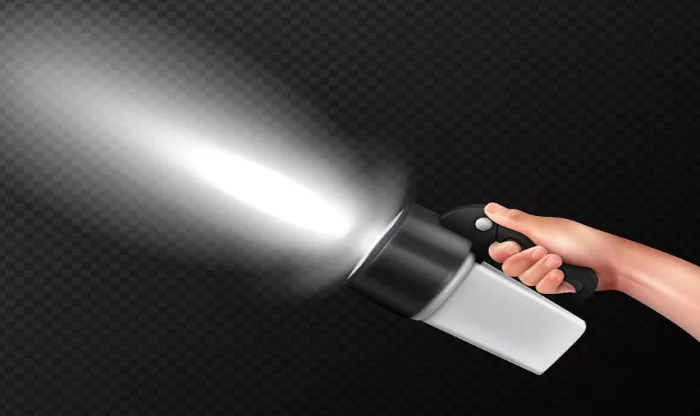
Lumens and Brightness Levels One of the most important features to consider when choosing a flashlight is its lumens, which measure the total light output. Higher lumens mean brighter light. For everyday use, a flashlight with 100 to 300 lumens is usually sufficient. For outdoor activities or security purposes, you might need a flashlight with 500 lumens or more. Adjustable brightness levels are also beneficial, allowing you to switch between low, medium, and high settings depending on your needs.
Beam Distance and Focus The beam distance indicates how far the light will travel. This is particularly important for outdoor use, where you might need to see long distances. A good flashlight should have a beam distance that suits your activities, whether it’s hiking, camping, or search and rescue. Some flashlights offer adjustable focus, allowing you to switch between a wide flood beam and a narrow spot beam. This feature provides versatility for both close-up and long-distance illumination.
Durability and Water Resistance Durability is essential, especially if you plan to use your flashlight in rugged conditions. Look for flashlights made from strong materials like aircraft-grade aluminum. They should be impact-resistant to withstand drops and rough handling. Water resistance is another crucial feature. Flashlights with an IPX rating indicate their level of water resistance. An IPX4 rating means the flashlight is splash-resistant, while an IPX7 rating means it can be submerged in water up to a certain depth. Choose a flashlight that matches your environment and weather conditions.
Battery Type and Life The type of battery your flashlight uses can affect its performance and convenience. Flashlights typically use disposable batteries (like AA or AAA) or rechargeable batteries. Rechargeable flashlights are more cost-effective and environmentally friendly in the long run. They can be charged via USB or docking stations. Consider the battery life, especially if you’ll be using the flashlight for extended periods. A flashlight with long battery life ensures you won’t be left in the dark when you need it most.
By focusing on these key features—lumens, beam distance, durability, and battery type—you can select a flashlight that best meets your needs and provides reliable performance in various situations.
Innovations in Flashlight Technology
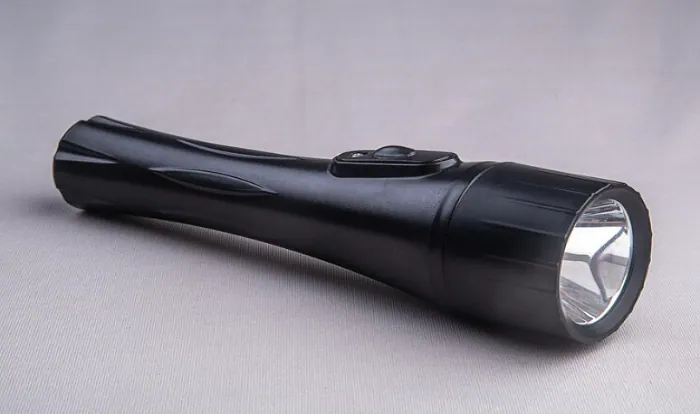
Smart Flashlights with Advanced Features Smart flashlights are a recent innovation that brings advanced technology to handheld lighting. These flashlights often come with Bluetooth connectivity, allowing users to control settings through a smartphone app. You can adjust brightness levels, set strobe patterns, and even check battery life from your phone. Some smart flashlights have built-in GPS and emergency signaling features, making them incredibly useful for outdoor enthusiasts and emergency responders. Voice activation and motion sensors are other features that are being integrated into smart flashlights, providing hands-free operation and ease of use.
Innovations in Battery Technology and Energy Efficiency Battery technology has significantly improved, enhancing the performance and sustainability of flashlights. Rechargeable lithium-ion batteries are now more common, offering longer life spans and faster charging times. These batteries are also lighter and more efficient than traditional alkaline batteries. Solar-powered flashlights are another innovation, providing a renewable energy source that's perfect for camping and emergency kits. Energy efficiency has also improved with advancements in LED technology. LEDs consume less power while providing brighter light, extending battery life and reducing the need for frequent recharges or battery replacements.
Developments in Flashlight Materials and Construction The materials and construction of flashlights have also seen significant advancements. Modern flashlights are often made from aircraft-grade aluminum, which is both lightweight and highly durable. This material is resistant to impact and corrosion, making it ideal for rugged use. Some flashlights are made with titanium or stainless steel for added durability. Waterproof and dustproof designs are now standard for many flashlights, ensuring they can withstand harsh conditions. The use of advanced polymers and rubber coatings provides better grip and shock resistance, enhancing the overall durability and user experience.
These innovations in flashlight technology have made them more versatile, reliable, and user-friendly. Whether for everyday use, outdoor adventures, or emergency situations, modern flashlights offer advanced features and improved performance to meet a wide range of needs.
Applications of Flashlights
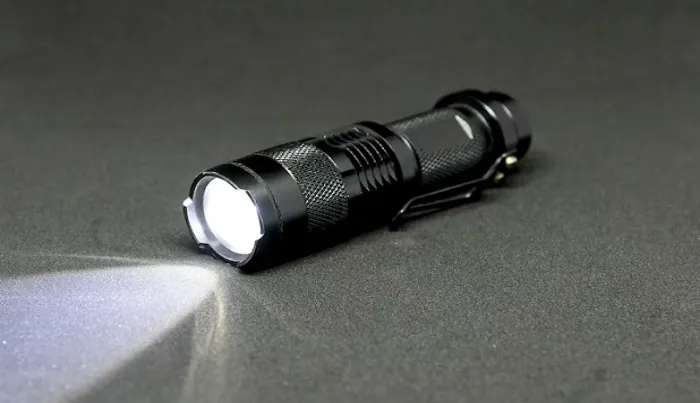
Everyday Household Uses Flashlights are essential tools in many homes for various everyday tasks. They are handy during power outages, providing reliable light when electricity is unavailable. Flashlights are also useful for checking dark corners, attics, or basements. Many people keep a flashlight in their car for emergencies or use it for small repairs and maintenance around the house, such as fixing a leaky pipe under the sink or checking the fuse box. Kids often use them for nighttime reading or fun activities like making shadow puppets.
Outdoor and Adventure Applications For outdoor enthusiasts, flashlights are indispensable. Hikers, campers, and backpackers rely on them to navigate trails after dark, set up tents, and cook meals at night. Headlamps, a type of hands-free flashlight, are particularly popular for these activities, providing light while keeping hands free for other tasks. Flashlights are also crucial for fishing, hunting, and boating, ensuring safety and visibility in low-light conditions. Waterproof and rugged models are especially useful in these scenarios, as they can withstand the elements and rough handling.
Professional and Emergency Scenarios In professional and emergency scenarios, flashlights are vital tools. Law enforcement officers and military personnel use tactical flashlights that offer powerful beams, strobe features, and durability. These flashlights are designed for situations requiring intense and reliable light. In emergency response, paramedics and firefighters use flashlights to navigate dangerous or dark environments, search for victims, and conduct medical assessments. Construction workers, electricians, and plumbers use durable, high-lumen flashlights to work in dimly lit or confined spaces. Flashlights are also essential in disaster preparedness kits, helping people find their way and stay safe during natural disasters or other emergencies.
Overall, flashlights serve many purposes, making them invaluable in everyday life, outdoor adventures, and professional and emergency situations. Their versatility, reliability, and portability make them a must-have tool for various applications.
Maintenance and Care Tips
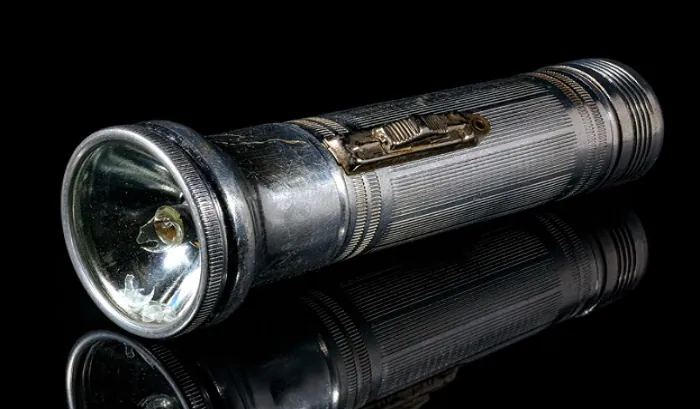
Proper Cleaning and Storage To ensure your flashlight lasts long and works efficiently, proper cleaning and storage are essential. After use, especially in outdoor or dirty environments, clean your flashlight with a soft, damp cloth. Avoid using harsh chemicals, as they can damage the flashlight's material. For stubborn dirt, a mild soap solution can be used. Make sure to dry the flashlight thoroughly before storing it to prevent moisture buildup, which can cause corrosion. Store your flashlight in a cool, dry place, away from direct sunlight and extreme temperatures. Keeping it in a designated spot ensures you can easily find it when needed.
Battery Maintenance and Replacement Good battery maintenance is crucial for the longevity of your flashlight. If you are not planning to use the flashlight for an extended period, remove the batteries to prevent leakage, which can damage the internal components. Regularly check the battery contacts for any signs of corrosion. If you see any white or greenish deposits, clean them with a small amount of vinegar or a battery contact cleaner. Replace the batteries as soon as you notice a decrease in brightness or if the flashlight flickers. Using high-quality, brand-name batteries can also help in maintaining optimal performance and extending the life of your flashlight.
Troubleshooting Common Issues Sometimes, your flashlight may not work as expected. Common issues include flickering, dim light, or complete failure to turn on. First, check the batteries to ensure they are correctly installed and have sufficient charge. If the batteries are fine, inspect the bulb or LED for any signs of damage. In some cases, a loose connection may be the problem. Ensure all parts are tightly secured. If the flashlight still doesn’t work, consult the user manual for specific troubleshooting steps. If the problem persists, it may be time to contact the manufacturer or consider replacing the flashlight.
Regular maintenance and proper care can significantly extend the life of your flashlight, ensuring it performs reliably whenever you need it.
Popular Brands and Models
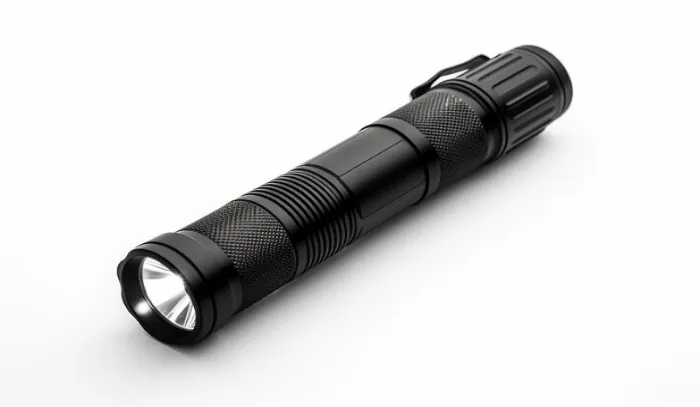
Overview of Leading Flashlight Brands
When it comes to choosing a reliable flashlight, several brands stand out for their quality, innovation, and performance. Brands like Streamlight, SureFire, Fenix, Maglite, and Olight are highly regarded in the flashlight market. Streamlight is known for its rugged and durable flashlights suitable for both professionals and everyday use. SureFire offers high-performance tactical flashlights designed for law enforcement and military applications. Fenix provides a wide range of powerful and versatile flashlights that cater to outdoor enthusiasts and general users. Maglite is renowned for its classic, sturdy design and reliability, while Olight is popular for its innovative features and compact designs.
Highlighting Top-Rated and Popular Models
Among the many models offered by these brands, a few have gained particular popularity for their outstanding features and performance.
- Streamlight ProTac HL-X: Known for its high lumen output and durable construction, the ProTac HL-X is a favorite among professionals and outdoor enthusiasts. It offers multiple lighting modes and a robust design that withstands harsh conditions.
- SureFire G2X Pro: This model is celebrated for its reliability and brightness. It features a high-performance LED and a durable polymer body, making it ideal for tactical and everyday use.
- Fenix PD36R: This flashlight is praised for its impressive brightness and long battery life. It features a rechargeable battery and multiple modes, making it suitable for various tasks and adventures.
- Maglite ML300L: A modern update to the classic Maglite design, the ML300L offers adjustable beam focus and a long-lasting LED light source. It’s known for its reliability and robustness.
- Olight S2R Baton II: This compact flashlight is popular for its high lumen output and rechargeable battery. It is praised for its user-friendly design and versatility, making it a great choice for everyday carry.
These popular models represent the best of what the flashlight market has to offer, providing users with reliable, high-quality lighting solutions for various needs and preferences.
Customization Options for Flashlights
Personalized Flashlight Designs
Customizing a flashlight allows you to tailor it to your specific needs and preferences. Personalized designs can include various features such as unique colors, engraved names or logos, and specific functionalities that fit your lifestyle. For instance, you might choose a flashlight with a particular beam pattern or brightness level that matches your activities, whether it’s for camping, work, or emergency use. Some manufacturers and specialty retailers offer customization services, allowing you to select from a range of colors and designs or even add personalized text. This means you can have a flashlight that not only meets your functional requirements but also reflects your personal style.
Benefits of Custom-Made Flashlights
Opting for a custom-made flashlight comes with several advantages. Firstly, it ensures that the flashlight is tailored to your exact needs. For example, if you need a flashlight with a specific beam distance or a certain level of water resistance, custom options allow you to choose these features precisely. Custom flashlights also often come with unique designs or added features that aren’t available in standard models, making them more versatile and useful.
Another benefit is the added personal touch. A custom flashlight can be a great gift idea, especially when engraved with a name or special message. It also stands out from generic options, making it easier to identify and less likely to be confused with someone else’s.
Custom flashlights can also reflect professional or organizational branding. For businesses or teams, having flashlights with company logos or team colors can enhance unity and visibility.
Overall, customization enhances both the functionality and aesthetic appeal of flashlights, making them more suited to individual needs and preferences.
Flashlights are essential tools that provide light and safety in various situations. They come in many types, including standard, LED, tactical, headlamps, and rechargeable models, each offering unique features and benefits. Understanding their key attributes—like brightness, durability, and battery life—helps you choose the best flashlight for your needs. Customization options allow for a personal touch, ensuring that your flashlight is not only functional but also reflects your style. Explore different types and features to find the perfect flashlight that suits your needs and enhances your daily life and adventures.
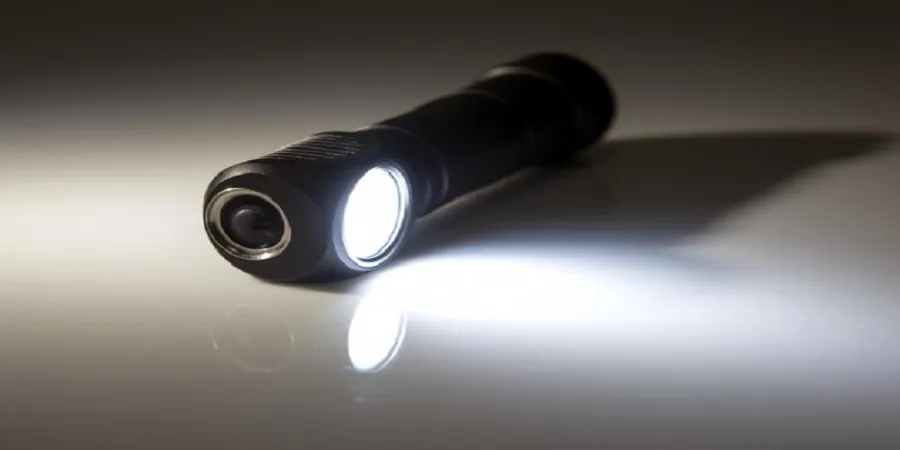
Comments